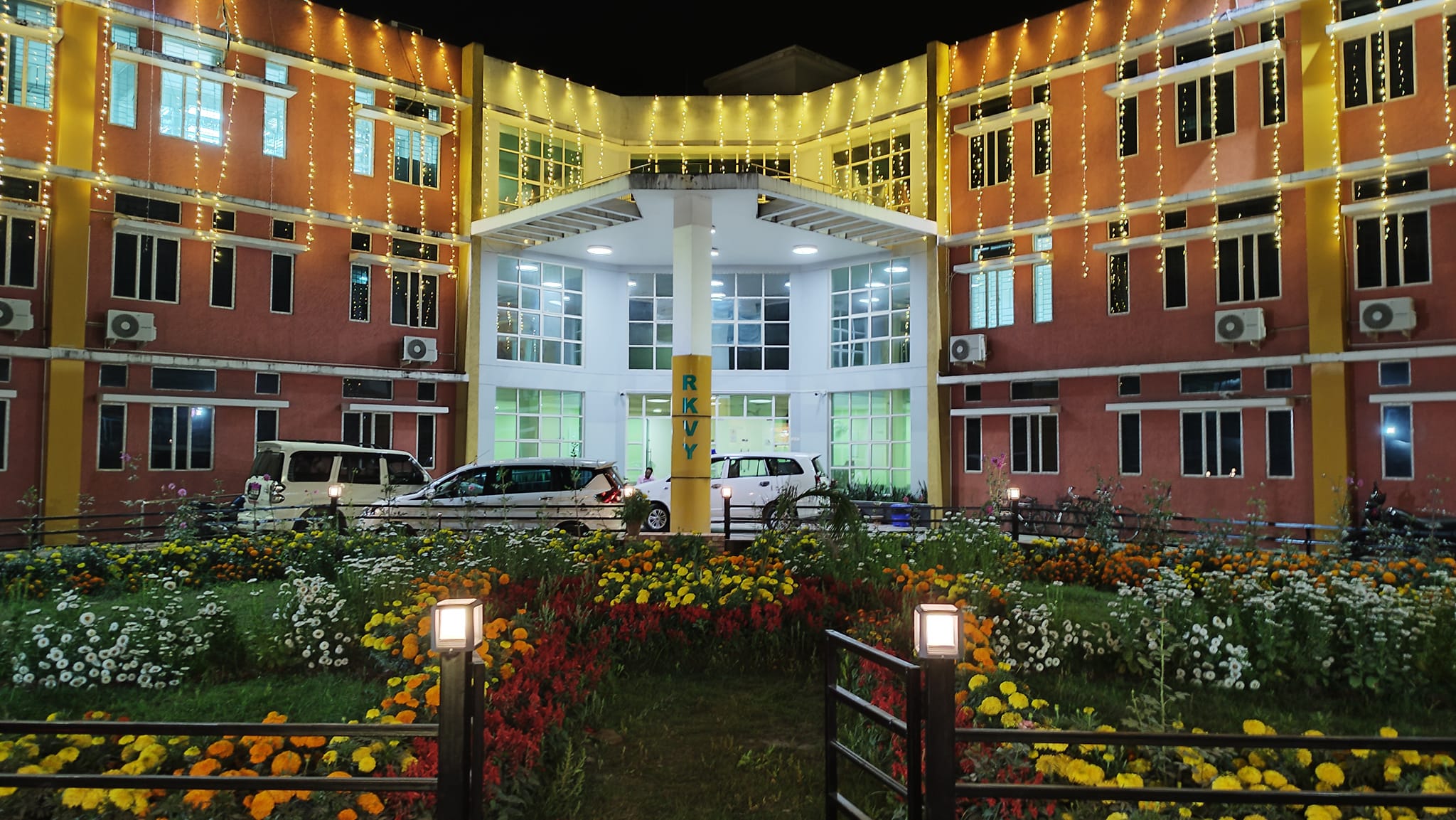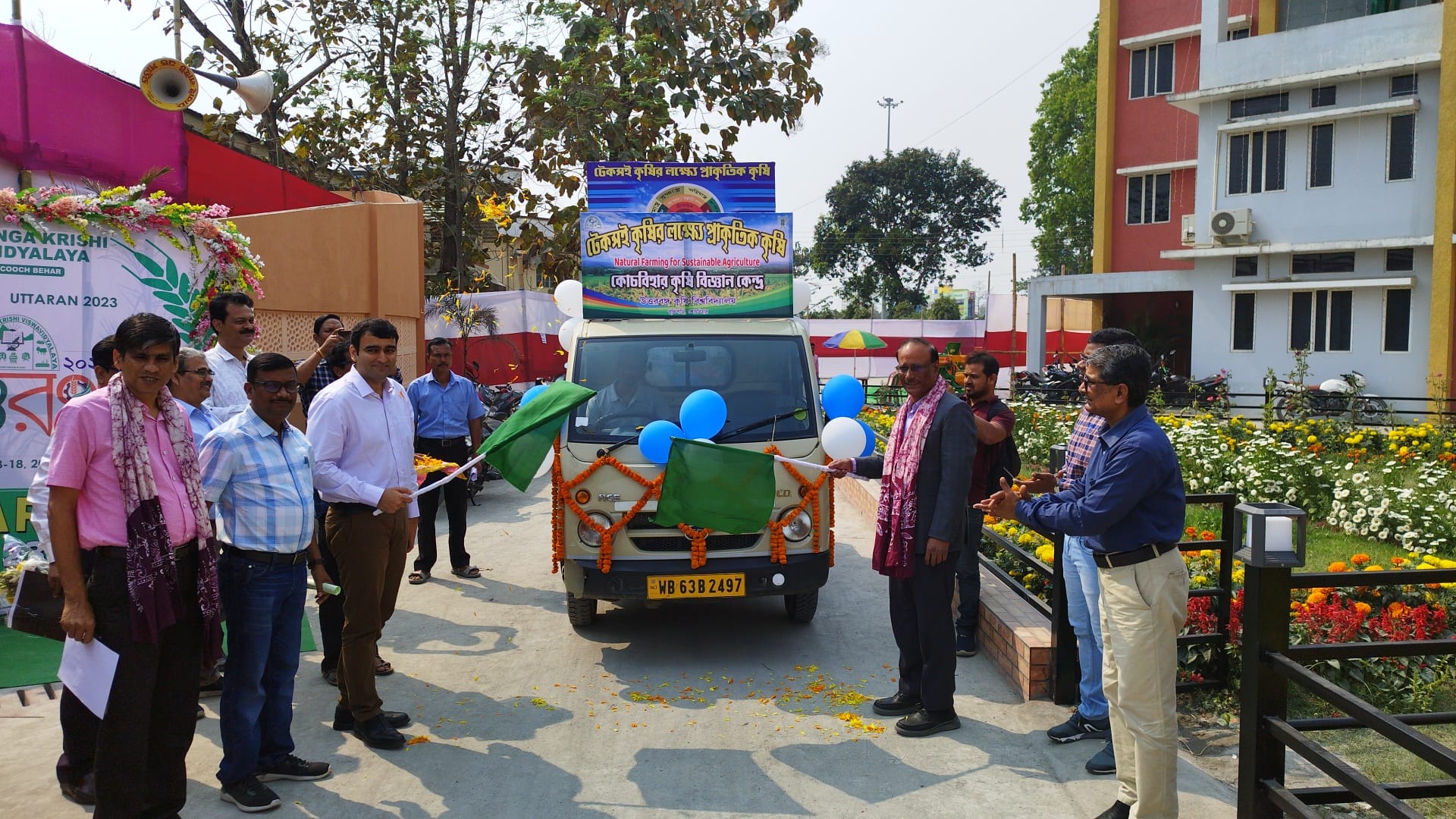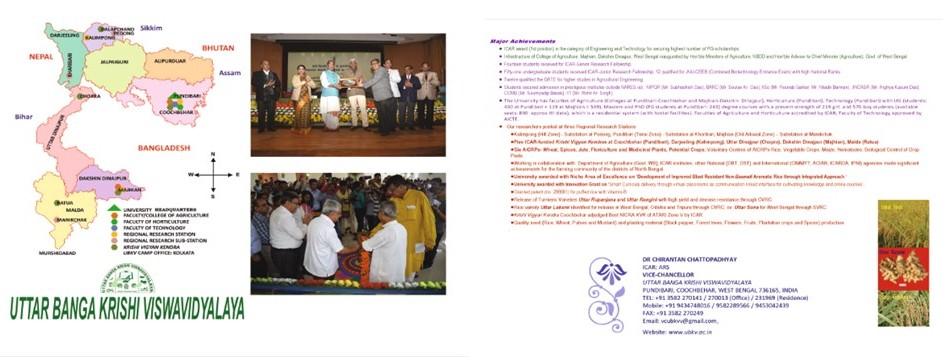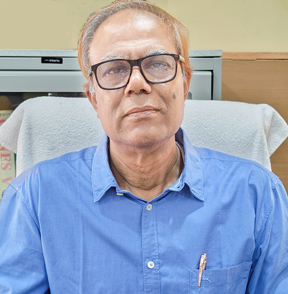Prof. Debabrata Basu
Vice-Chancellor
E-mail: [email protected] , [email protected]
From the desk of Vice Chancellor…
Dear Students, Faculty, Staff, and Stakeholders,
I am honored to address you as the Vice-Chancellor of Uttar Banga Krishi Viswavidyalaya, a renowned institution dedicated to agricultural education, research, and extension development. Today, I want to emphasize our shared commitment to agricultural development and the empowerment of farmers and farm women in our region.
Agriculture has always been the backbone of our nation’s economy, and it plays a crucial role in ensuring food security and livelihoods for millions of people. However, it is not just an occupation; it is a way of life for a significant portion of our population. Therefore, our responsibility as an agricultural university goes beyond academic excellence; it extends to fostering innovation, research, and outreach to make a real impact on the ground.
Our first priority is to provide high-quality agricultural education that equips our students with the knowledge, skills, and mindset needed to address the evolving challenges in agriculture. We must continually update our learning to incorporate the latest advancements in technology, sustainable farming practices addressing climate change, and agribusiness management. Our goal is to produce graduates who are not only job-ready but also capable of leading positive change in the agricultural sector.
Research is the cornerstone of progress in agriculture. Our university must be at the forefront of innovative research that addresses the pressing issues faced by our farmers. We should encourage interdisciplinary collaboration and research partnerships with governmental agencies, NGOs, and industry stakeholders. By conducting relevant and impactful research, we can develop solutions that improve crop yields, reduce post-harvest losses, and promote sustainable farming practices.
Our commitment to farmers and farm women extends to providing them with the knowledge and resources they need to thrive. Our extension services should be proactive, accessible, and tailored to the specific needs of our region. We must empower our extension workers to engage with farmers on grassroot level, offering guidance on best practices, precision agriculture, technology adoption, and market linkages. Through effective extension services, we can bridge the gap between research and practical implementation.
Empowerment is not just a buzzword; it’s our mission. We must ensure that our educational and outreach programs are inclusive and responsive to the needs of all farmers, including farm women and marginalized communities. We should promote gender equality in agriculture by providing training and support to empower farm women as key decision-makers in farming activities. Furthermore, financial literacy and access to credit must be facilitated to enhance the economic empowerment of our farming community.
In conclusion, our journey towards agricultural development and the empowerment of farmers and farm women is a noble and crucial endeavor. I call upon all members of our university community, including faculty, staff, students, alumni, and partners, to work together tirelessly to achieve these goals. Let us continue to be a beacon of hope and knowledge for our region, driving positive change in the agricultural sector and contributing to the prosperity of our nation.
Thank you for your dedication, commitment and hard work.
Warm regards,
Debabrata Basu
Vice-Chancellor
Uttar Banga Krishi Viswavidyalaya



















